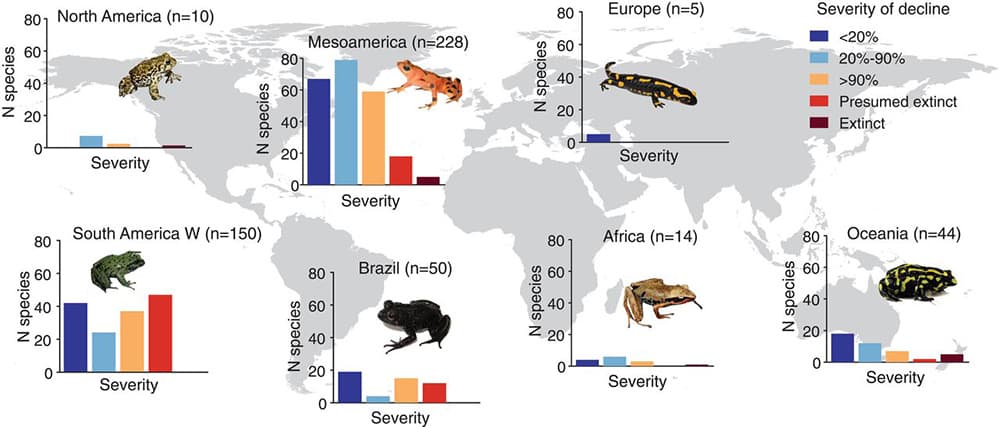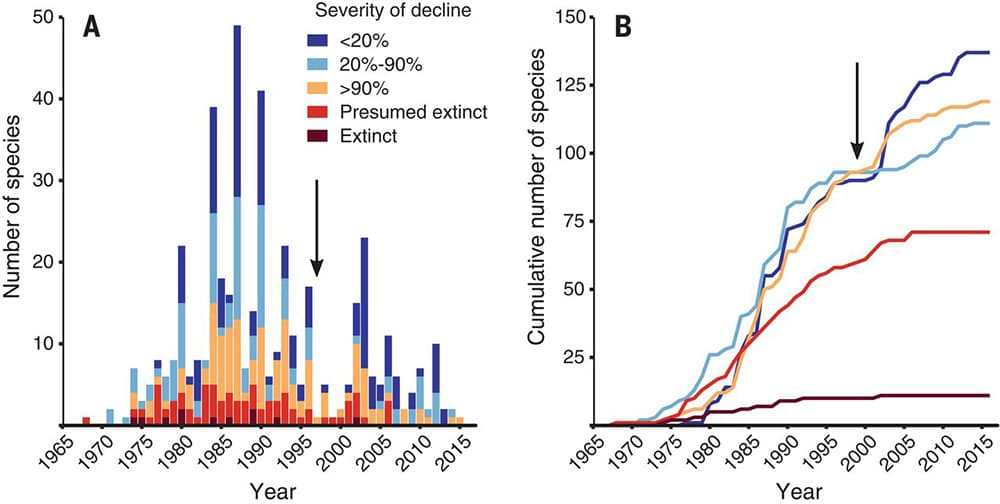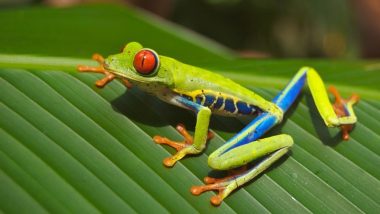A killer skin fungus that caused the death of frogs has now been found out to be responsible for damaging biodiversity around the world. Dubbed as the fungus that caused an amphibian apocalypse, this pathogen has affected more living beings than any other disease ever recorded. It has displaced cats and rodents and is the primary factor in the population decline of at least 500 amphibian species, including 90 presumed extinctions. According to researchers, the affected are mostly frogs and toads which account for 6.5 percent of the amphibian species. In the study titled 'Amphibian fungal panzootic causes catastrophic and ongoing loss of biodiversity' published in Science on Thursday, the researchers call it "the greatest documented loss of biodiversity attributable to a pathogen". 60 Percent of Earth's Wildlife Has Been Lost, We Are the 'Last Generation' That Can Save Nature, Says WWF.
The research tallies the damage done by the chytrid fungi Batrachochytrium dendrobatidis (Bd) and Batrachochytrium salamandrivorans (Bsal) that has displaced rodents and even cats. The main culprit is Bd which was spread through wildlife trade. It was first identified in 1998 and the threat peaked during the 1980s in Central and South America and Australia and continues to be so. Bacteria Found in Frog Skin May Help Fight Fungal Infections in Humans.

In the research, study leader Ben Scheele, an ecologist at Australian National University says, "We've known that's chytrid's really bad, but we didn't know how bad it was, and it's much worse than the previous early estimates. Our new results put it on the same scale, in terms of damage to biodiversity, as rats, cats, and (other) invasive species." Antibiotic-Resistant Bacteria Found in Pork Products From Brazil.
For the study, Ben Scheele, an ecologist at Australian National University in Canberra, worked with 40 other researchers who have regional amphibian knowledge. They analysed the literature, interviews of researchers with expertise from 24 countries for the research. They analysed the data including timing and geographic distribution of amphibian declines caused due to chytridiomycosis.

Out of the 500 species which were affected, 40 percent of them continue to be on the decline. The population of 124 species has gone down terribly dwindling to less than 10 percent. The most affected are slow-growing species which don't reach reproductive maturity like other species in wetter regions or at higher altitudes. Among those extinct in the wild or presumed extinct include the golden toad, the Panamanian golden frog, and the Angelito stubfoot toad. Bsal, the second related fungus primarily affects salamanders and has led to the decline of one species. Humans Are Cancerous to Animals! We Have Already Destroyed 83% of Wild Life.
Allan Pessier, a veterinary pathologist at Washington State University in Pullman who helped first identify Bd in amphibians said, "There is a lot of information about individual species out there, but no one had brought it all together. I'm really happy that they were able to draw conclusions out of this." Bd has become "a very serious threat" to the unexposed amphibian population like those in Papua New Guinea. With its global spread, new strains of the fungus can continue to evolve eating into other species' abilities to adapt. He says, once loose in the environment, the fungus can be contained only by better biosecurity measures and improved wildlife monitoring.
(The above story first appeared on LatestLY on Mar 29, 2019 02:13 PM IST. For more news and updates on politics, world, sports, entertainment and lifestyle, log on to our website latestly.com).













 Quickly
Quickly


